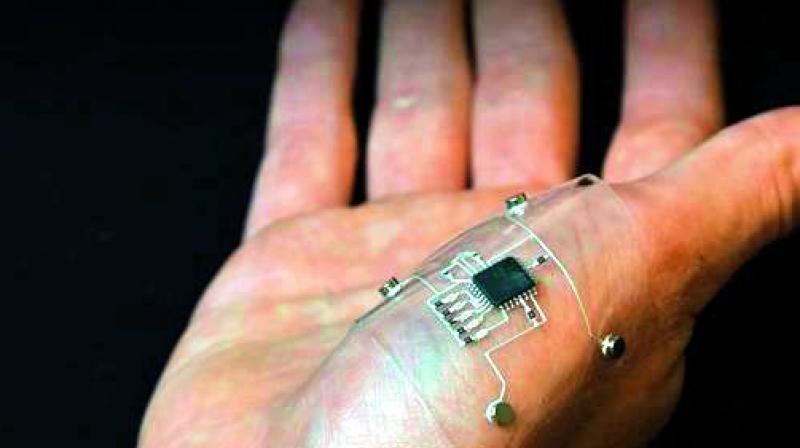The Future of Wearable Devices: Exploring the Potential of Flexible Hybrid Electronics to Revolutionize Consumer Electronics

Flexible Hybrid Electronics: The Future of Wearable Devices
Flexible hybrid electronics (FHE) is an emerging technology that combines the flexibility of plastic substrates with the functionality of electronics. By integrating electronic and photonic components directly on thin, lightweight and flexible plastic sheets, FHE has the potential to transform wearable devices and enable novel form factors for consumer electronics. This technology promises to make electronics even more integrated into our daily lives.
What are Flexible Hybrid Electronics?
Flexible hybrid electronics refers to a class of technologies that combines the mechanical flexibility of polymers and thin films with the functionality of integrated electronic and photonic components. Traditional silicon-based electronics rely on rigid printed circuit boards or glass substrates which limits their ability to conform to non-planar or curved surfaces. FHE overcomes this limitation by using flexible plastic materials like polyimide, polyethylene terephthalate or parylene as the substrate.
Components like thin-film batteries, organic light-emitting diodes (OLEDs), printed sensors and radio frequency identification (RFID) tags are directly fabricated onto these flexible substrates using techniques like thin-film deposition, printing and lamination. This allows entire circuits and devices to flex and stretch without compromising performance. By integrating both passive and active electronic elements on bendable plastic sheets, FHE enables entirely new form factors for electronics.
Applications and Benefits of FHE
Some key applications where FHE is poised to make an impact include:
Wearables - FHE will allow even smaller, sleeker and more comfortable wearable devices that can conform to different parts of the body. Future smartwatches, health monitors, augmented reality glasses could be made significantly slimmer and less obtrusive using this technology.
Flexible Displays - OLED and other electronic displays fabricated on plastic using FHE will enable truly flexible smartphones and tablets that can roll, fold or twist. This will lead to innovative new factors like rollable displays.
Soft Robotics - FHE components on elastic substrates open up possibilities for developing truly soft and flexible robots for applications in rehabilitation, prosthetics or rescue operations.
Implantable Electronics - Miniaturized FHE circuits could enable developing swallowable medical devices or implantable drug delivery systems of the future.
Packaging & Logistics - Components like RFID tags directly printed on packages and containers using FHE reduces costs and improves traceability throughout the supply chain.
Some key benefits offered by FHE include versatility in form factors, improved mechanical robustness, weight reduction,cost savings through simplified manufacturing processes like printing and opportunities for new functionalities by seamlessly integrating electronics into irregular surfaces. It could have significant impact on various industries.
Challenges and Future Outlook
While FHE holds immense promise to transform tomorrow's electronics, there are still some technical challenges that need to be addressed:
Performance & Reliability - Components on flexible plastic may not match the processing power and lifetime expectancy of silicon-based rigids substrates. Improving performance without compromising flexibility remains an area of active research.
Mass Manufacturing Techniques - Developing high-throughput, cost-effective techniques like large-area printing of devices on plastic rolls is critical for commercialization.
Component Integration - Effectively integrating both passive and active electronic components into systems while maintaining flexibility needs further innovation.
Form Factor Standardization - For technology adoption, consistent form factors and interface specifications are needed across devices.
Despite these hurdles, the flexible hybrid electronics industry is projected to grow at a rapid pace in coming years as more commercial applications emerge. Researchers globally continue to tackle challenges through innovations in material science, device fabrication and system integration. It is anticipated that within this decade, FHE will start enabling truly innovative consumer products and help drive the next generation of flexible devices. With the potential to transform how electronics interface with the world, flexible hybrids represent the future of wearable and ubiquitous computing.
Get more insights on this topic :
- Art
- Causes
- Crafts
- Dance
- Drinks
- Film
- Fitness
- Food
- Spiele
- Gardening
- Health
- Startseite
- Literature
- Music
- Networking
- Andere
- Party
- Religion
- Shopping
- Sports
- Theater
- Wellness
- IT, Cloud, Software and Technology


